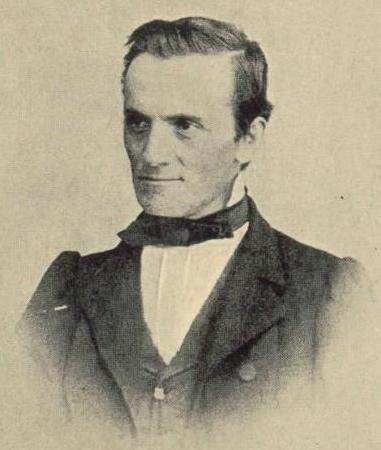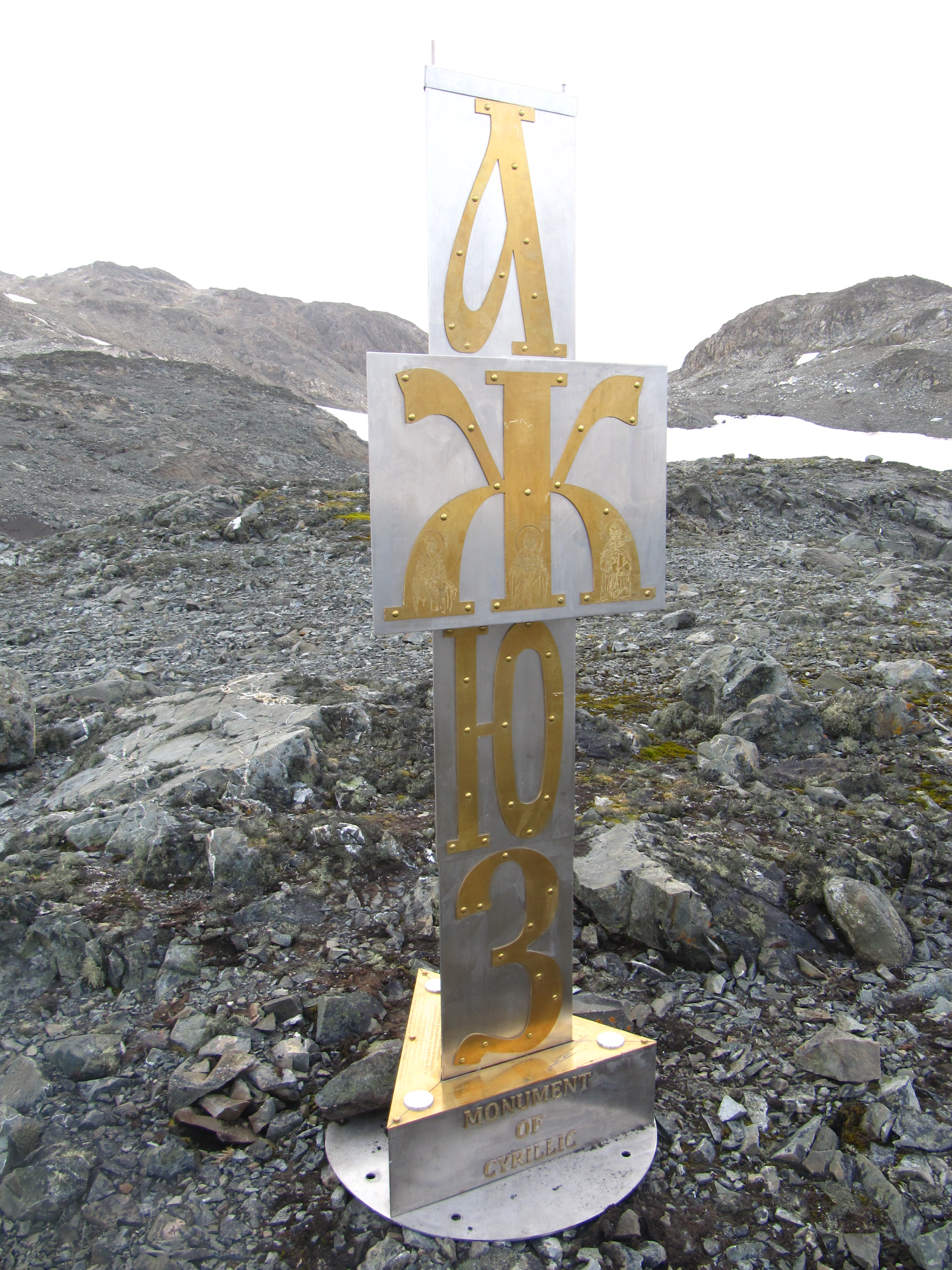|
Matija Majar
Matija Majar, also spelled Majer (7 February 1809 – 31 July 1892), pseudonym Ziljski, was a Carinthian Slovene Roman Catholic priest and political activist, best known as the creator of the idea of a United Slovenia. Biography Majar was born in the small village of Görtschach ( sl, Goriče) east of Hermagor-Pressegger See in the Gail Valley ( sl, Ziljska dolina) in southern Carinthia, then part of the Austrian Empire. He was baptized ''Mathias Maar''. He grew up in a bilingual Slovene-German environment and then attended the lyceum in Klagenfurt and in Graz. During his studies in Klagenfurt, he came under the influence of Anton Martin Slomšek, a Roman Catholic priest and author who propagated the use of Slovene in the public sphere. Majar served as a priest in Slovene-speaking parishes in Carinthia, first in Rosegg and then in the settlement of Camporosso near Tarvisio in the Canale Valley (now in Italy). In 1837, he moved back to Klagenfurt, where he first worked in ... [...More Info...] [...Related Items...] OR: [Wikipedia] [Google] [Baidu] |
Anton Janežič
Anton Janežič, also known in German as Anton Janeschitz (19 December 1828 – 18 September 1869) was a Carinthian Slovene linguist, philologist, author, editor, literary historian and critic. Life Janežič was born in a peasant family in the village of Lessach ( sl, Leše) near St. Jakob im Rosental ( sl, Št. Jakob v Rožu) in Carinthia. He attended the grammar school in Klagenfurt. In 1848, when Slovene was introduced in school, Janežič was employed as professor of Slovene at the Klagenfurt lyceum. In 1851 he began to study linguistics and Slavic philology at the University of Vienna under the supervision of Franz Miklosich. In 1854 he returned to Klagenfurt, where he continued to teach Slovene, German, and history at the lyceum until 1866 when he resigned because of illness. He died three years later in Klagenfurt, where he was also buried. In the 1870s, he was reburied in his local parish of St. Jakob. Work Janežič entered the public life after the Spring ... [...More Info...] [...Related Items...] OR: [Wikipedia] [Google] [Baidu] |
Odessa
Odesa (also spelled Odessa) is the third most populous city and municipality in Ukraine and a major seaport and transport hub located in the south-west of the country, on the northwestern shore of the Black Sea. The city is also the administrative centre of the Odesa Raion and Odesa Oblast, as well as a multiethnic cultural centre. As of January 2021 Odesa's population was approximately In classical antiquity a large Greek settlement existed at its location. The first chronicle mention of the Slavic settlement-port of Kotsiubijiv, which was part of the Grand Duchy of Lithuania, dates back to 1415, when a ship was sent from here to Constantinople by sea. After a period of Lithuanian Grand Duchy control, the port and its surroundings became part of the domain of the Ottomans in 1529, under the name Hacibey, and remained there until the empire's defeat in the Russo-Turkish War of 1792. In 1794, the modern city of Odesa was founded by a decree of the Russian empress Cather ... [...More Info...] [...Related Items...] OR: [Wikipedia] [Google] [Baidu] |
Cyrillic Script
The Cyrillic script ( ), Slavonic script or the Slavic script, is a writing system used for various languages across Eurasia. It is the designated national script in various Slavic, Turkic, Mongolic, Uralic, Caucasian and Iranic-speaking countries in Southeastern Europe, Eastern Europe, the Caucasus, Central Asia, North Asia, and East Asia. , around 250 million people in Eurasia use Cyrillic as the official script for their national languages, with Russia accounting for about half of them. With the accession of Bulgaria to the European Union on 1 January 2007, Cyrillic became the third official script of the European Union, following the Latin and Greek alphabets. The Early Cyrillic alphabet was developed during the 9th century AD at the Preslav Literary School in the First Bulgarian Empire during the reign of tsar Simeon I the Great, probably by disciples of the two Byzantine brothers Saint Cyril and Saint Methodius, who had previously created the Glagoli ... [...More Info...] [...Related Items...] OR: [Wikipedia] [Google] [Baidu] |
Friuli
Friuli ( fur, Friûl, sl, Furlanija, german: Friaul) is an area of Northeast Italy with its own particular cultural and historical identity containing 1,000,000 Friulians. It comprises the major part of the autonomous region Friuli Venezia Giulia, i.e. the administrative provinces of Udine, Pordenone, and Gorizia, excluding Trieste. Names The multiethnic and subsequent multilingual tradition of Friuli means that the name of the region varies according to locality. Besides from Italian (), other local Romance forms include Friulan () and Venetian ; in German and in Slovene. The name ''Friuli'' originates from the ancient Roman town of (now ). Geography Friuli is bordered on the west by the Veneto region with the border running along the Livenza river, on the north by the crest of the Carnic Alps between Carnia and Austrian Carinthia, on the east by the Julian Alps, the border with Slovenia and the Timavo river, and on the south by the Adriatic Sea. The ad ... [...More Info...] [...Related Items...] OR: [Wikipedia] [Google] [Baidu] |
Hohenthurn
Hohenthurn ( sl, Straja vas) is a municipality in the district of Villach-Land in the Austrian state of Carinthia. Congregation structure Hohenthurn consists of two cadastral communities, Dreulach and Hohenthurn, which comprise a total of the following six villages: (population status January 1, 2018) Statistik Austria: Bevölkerung am 1.1.2018 nach Ortschaften (Gebietsstand 1.1.2018) * Achomitz (''Zahomec'') (90) * Draschitz (''Drašče'') (189) * Dreulach (''Drevlje'') (118) * Göriach (''Gorje'') (99) * Hohenthurn (''Straja vas'') (209) * Stossau (''Štasava'') (146) Geography Hohenthurn is located in the valley of the Gail river (''Gailtal''), near the confluence with the Gailitz tributary. The municipal area stretches on the northern slope of the Carnic Alps, close to the border with Italy. It comprises the cadastral communities of Hohenthurn proper and Dreulach (''Drevlje''). According to a 2001 census, 8.3% of the population are Carinthian Slovenes, speaking the local G ... [...More Info...] [...Related Items...] OR: [Wikipedia] [Google] [Baidu] |
Slovenia
Slovenia ( ; sl, Slovenija ), officially the Republic of Slovenia (Slovene: , abbr.: ''RS''), is a country in Central Europe. It is bordered by Italy to the west, Austria to the north, Hungary to the northeast, Croatia to the southeast, and the Adriatic Sea to the southwest. Slovenia is mostly mountainous and forested, covers , and has a population of 2.1 million (2,108,708 people). Slovenes constitute over 80% of the country's population. Slovene, a South Slavic language, is the official language. Slovenia has a predominantly temperate continental climate, with the exception of the Slovene Littoral and the Julian Alps. A sub-mediterranean climate reaches to the northern extensions of the Dinaric Alps that traverse the country in a northwest–southeast direction. The Julian Alps in the northwest have an alpine climate. Toward the northeastern Pannonian Basin, a continental climate is more pronounced. Ljubljana, the capital and largest city of Slovenia, is geogra ... [...More Info...] [...Related Items...] OR: [Wikipedia] [Google] [Baidu] |
Slovene Lands
The Slovene lands or Slovenian lands ( sl, Slovenske dežele or in short ) is the historical denomination for the territories in Central and Southern Europe where people primarily spoke Slovene. The Slovene lands were part of the Illyrian provinces, the Austrian Empire and Austria-Hungary (in Cisleithania). They encompassed Carniola, southern part of Carinthia, southern part of Styria, Istria, Gorizia and Gradisca, Trieste, and Prekmurje. Their territory more or less corresponds to modern Slovenia and the adjacent territories in Italy, Austria, Hungary, and Croatia, where autochthonous Slovene minorities live. In the areas where present-day Slovenia borders to neighboring countries, they were never homogeneously ethnically Slovene. Terminology Like the Slovaks, the Slovenes preserve the self-designation of the early Slavs as their ethnonym. The term ''Slovenia'' ("Slovenija") was not in use prior to the early 19th century, when it was coined for political purposes by ... [...More Info...] [...Related Items...] OR: [Wikipedia] [Google] [Baidu] |
Revolutions Of 1848 In The Habsburg Areas
The Revolutions of 1848 in the Austrian Empire were a set of revolutions that took place in the Austrian Empire from March 1848 to November 1849. Much of the revolutionary activity had a nationalist character: the Empire, ruled from Vienna, included ethnic Germans, Hungarians, Slovenes, Poles, Czechs, Slovaks, Ruthenians (Ukrainians), Romanians, Croats, Venetians and Serbs; all of whom attempted in the course of the revolution to either achieve autonomy, independence, or even hegemony over other nationalities. The nationalist picture was further complicated by the simultaneous events in the German states, which moved toward greater German national unity. Besides these nationalists, liberal and even socialist currents resisted the Empire's longstanding conservatism. Preamble The events of 1848 were the product of mounting social and political tensions after the Congress of Vienna of 1815. During the "pre-March" period, the already conservative Austrian Empire moved furthe ... [...More Info...] [...Related Items...] OR: [Wikipedia] [Google] [Baidu] |
Pan-Slavic
Pan-Slavism, a movement which crystallized in the mid-19th century, is the political ideology concerned with the advancement of integrity and unity for the Slavic people. Its main impact occurred in the Balkans, where non-Slavic empires had ruled the South Slavs for centuries. These were mainly the Byzantine Empire, Austria-Hungary, the Ottoman Empire, and Venice. Origins Extensive pan-Slavism began much like Pan-Germanism - both these movements flourished from the sense of unity and nationalism experienced within ethnic groups after the French Revolution and the consequent Napoleonic Wars against traditional European monarchies. As in other Romantic nationalist movements, Slavic intellectuals and scholars in the developing fields of history, philology, and folklore actively encouraged Slavs' interest in their shared identity and ancestry. Pan-Slavism co-existed with the Southern Slavic drive towards independence. Commonly used symbols of the Pan-Slavic movement were the P ... [...More Info...] [...Related Items...] OR: [Wikipedia] [Google] [Baidu] |
Stanko Vraz
Stanko Vraz (born Jakob Frass; 30 June 1810 – 20 May 1851) was a Slovenian-Croatian poet. He Slavicized his name to ''Stanko Vraz'' in 1836. Biography Born in the village of Cerovec in Lower Styria, Austrian Empire (today in Slovenia), Vraz was one of the most important figures of the Illyrian Movement in the Kingdom of Croatia and Slavonia. He completed elementary school in Ljutomer and gymnasium in Maribor after which he studied philosophy in Graz. During his education and career he reached fluency in German, French, Spanish and multiple Slavic languages. He was the first Croatian to earn his living as a professional writer. He wrote poems and travelogues and collected folk poems. He also translated foreign literature into Croatian. While in Samobor, he met Julijana "Ljubica" Cantilly, the niece of his friend and colleague, Ljudevit Gaj. She served as his muse, and he wrote and dedicated many poems and works to her. In this period Vraz became a strong advocate for the ... [...More Info...] [...Related Items...] OR: [Wikipedia] [Google] [Baidu] |
Croatia
, image_flag = Flag of Croatia.svg , image_coat = Coat of arms of Croatia.svg , anthem = "Lijepa naša domovino"("Our Beautiful Homeland") , image_map = , map_caption = , capital = Zagreb , coordinates = , largest_city = capital , official_languages = Croatian language, Croatian , languages_type = Writing system , languages = Latin alphabet, Latin , ethnic_groups = , ethnic_groups_year = 2021 , religion = , religion_year = 2021 , demonym = , government_type = Unitary parliamentary republic , leader_title1 = President of Croatia, President , leader_name1 = Zoran Milanović , leader_title2 = Prime Minister of Croatia, Prime Minister , leader_name2 = Andrej Plenković , leader_title3 = Speaker of the Croatian Parliament, Speaker of P ... [...More Info...] [...Related Items...] OR: [Wikipedia] [Google] [Baidu] |






.jpg)
